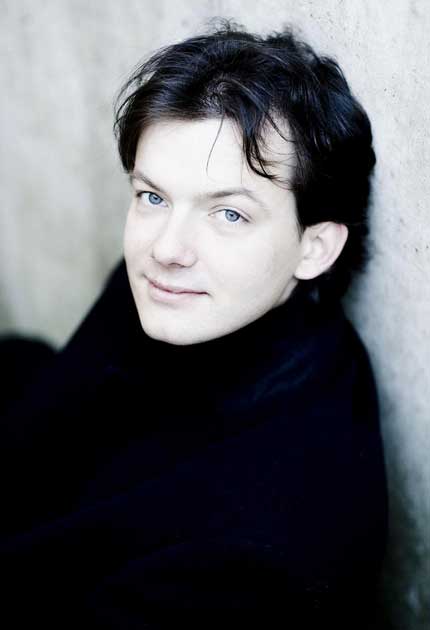CBSO/Nelsons, Symphony Hall, Birmingham

Your support helps us to tell the story
From reproductive rights to climate change to Big Tech, The Independent is on the ground when the story is developing. Whether it's investigating the financials of Elon Musk's pro-Trump PAC or producing our latest documentary, 'The A Word', which shines a light on the American women fighting for reproductive rights, we know how important it is to parse out the facts from the messaging.
At such a critical moment in US history, we need reporters on the ground. Your donation allows us to keep sending journalists to speak to both sides of the story.
The Independent is trusted by Americans across the entire political spectrum. And unlike many other quality news outlets, we choose not to lock Americans out of our reporting and analysis with paywalls. We believe quality journalism should be available to everyone, paid for by those who can afford it.
Your support makes all the difference.Andris Nelsons knows that Mahler's Second Symphony is inextricably linked with Sir Simon Rattle's time as Music Director of the City of Birmingham Symphony Orchestra. Back in his native Latvia, Nelsons more or less grew up with the famous Rattle recording of the Resurrection Symphony but, conducting the work with the CBSO, he talks of "polishing the mosaics in a different way". Polish, however, is exactly what was lacking here. At the same time, you could argue that however much this sprawling performance also lacked depth, Nelsons' dynamic interpretation made up for it in breathtaking immediacy and striking theatricality.
From the titanic opening funeral march, a collision between life and death, the composer's "dark feelings" surfaced threateningly among the bruising climaxes. There was hardly any let-up in Nelsons' urgent approach. His take was that of a young man; not always well-judged in tempo nor sensitively graded in dynamics. Yet it grabbed the listener by the throat.
After a meandering andante, the wry music of the fish in the Des Knaben Wunderhorn-inspired scherzo ducked and dived, the violins mostly synchronised in their dialogue, the woodwind and brass adding vivid substance. But in the climactic "outburst of despair", Nelsons galvanised the players into a frenzy – his own flamboyant gymnastics and clinging wet shirt, wriggling up and down his back, representing a piece of performance art in themselves.
Following the "Urlicht", in which the mezzo-soprano Mihoko Fujimura was admirably cool and controlled, Nelsons kept up the momentum in the apocalyptic last movement. The bigger picture was constantly interrupted by the jagged nature of the episodic passages and nightmarish visions. Overall blend was sacrificed to raw and aggressive contrasts of mood, resulting in some remarkably rough playing. Neither the orchestra nor the choir – which made an unusually bumpy first entry – sounded quite at ease with Nelsons's exhortations in the choral finale, though Sarah Fox was a sweet-voiced soprano soloist.
Nelsons drove a performance that was visceral but which lacked clear definition. It had sweep but not much subtlety; intensity but too little profundity. But if this dynamic young conductor speaks to the heart rather than the head, his music-making lacks nothing in passion and commitment.
Join our commenting forum
Join thought-provoking conversations, follow other Independent readers and see their replies
Comments